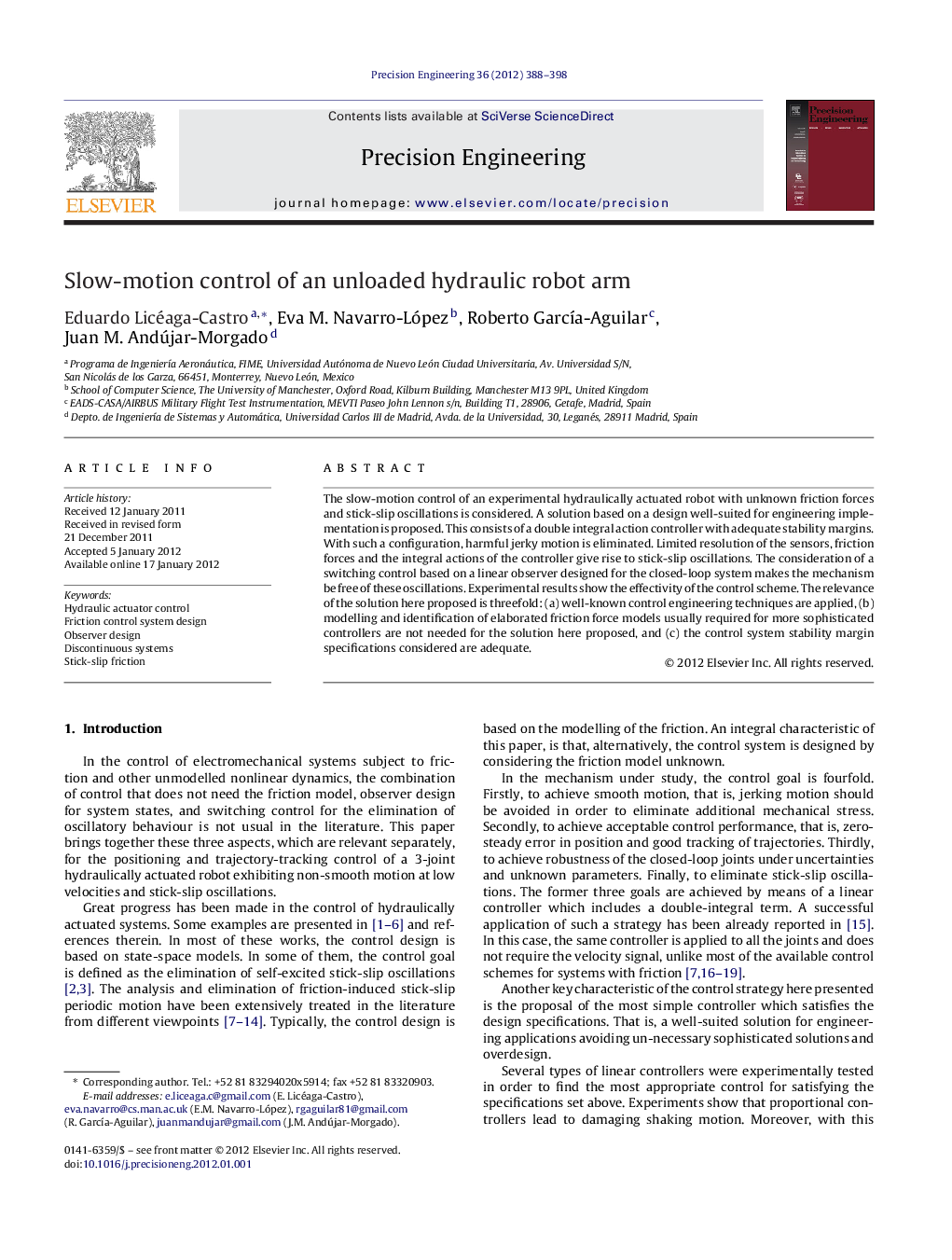| Article ID | Journal | Published Year | Pages | File Type |
|---|---|---|---|---|
| 805174 | Precision Engineering | 2012 | 11 Pages |
The slow-motion control of an experimental hydraulically actuated robot with unknown friction forces and stick-slip oscillations is considered. A solution based on a design well-suited for engineering implementation is proposed. This consists of a double integral action controller with adequate stability margins. With such a configuration, harmful jerky motion is eliminated. Limited resolution of the sensors, friction forces and the integral actions of the controller give rise to stick-slip oscillations. The consideration of a switching control based on a linear observer designed for the closed-loop system makes the mechanism be free of these oscillations. Experimental results show the effectivity of the control scheme. The relevance of the solution here proposed is threefold: (a) well-known control engineering techniques are applied, (b) modelling and identification of elaborated friction force models usually required for more sophisticated controllers are not needed for the solution here proposed, and (c) the control system stability margin specifications considered are adequate.
